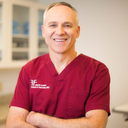Fullness under your neck can be a combination of fat, soft tissues, loose skin skin, enlarged neck muscles and salivary glands. Although the salivary glands can be reduced with further neck lift surgery, it is likely to be in combination with addressing other parts of the anatomy at the same time. It may be in your best interest to have a further clinical assessment of your neck to review your options.The salivary glands are located under your jaw line (termed submandibular and submaxillary salivary glands), and are usually hidden behind your natural jaw and soft tissue of your neck. In some people the glands can be lower down and create bulging in the neck, this can create a more bulbous or irregular shape and contour of your neck. Most people who undergo facial rejuvenation with face and neck lift surgery do not require surgery on their salivary glands. In some people as a consequence of their natural anatomy and facial ageing the position of the glands could effect the final surgical result. In these patients partial removal of the salivary glands as part of the face and neck lift surgery may be beneficial and improve the result of the surgery. The anatomy of the salivary glands include a very powerful blood supply, hence surgery on the glands needs to be both cautious and reserved for when necessary to avoid unnecessary issue from surgery. If your salivary glands are more prominent in your neck, then partial removal of the salivary glands at the same time as facial rejuvenation surgery may improve the results of your surgery, an assessment is required to determine your individual needs and suitability for this surgery.






